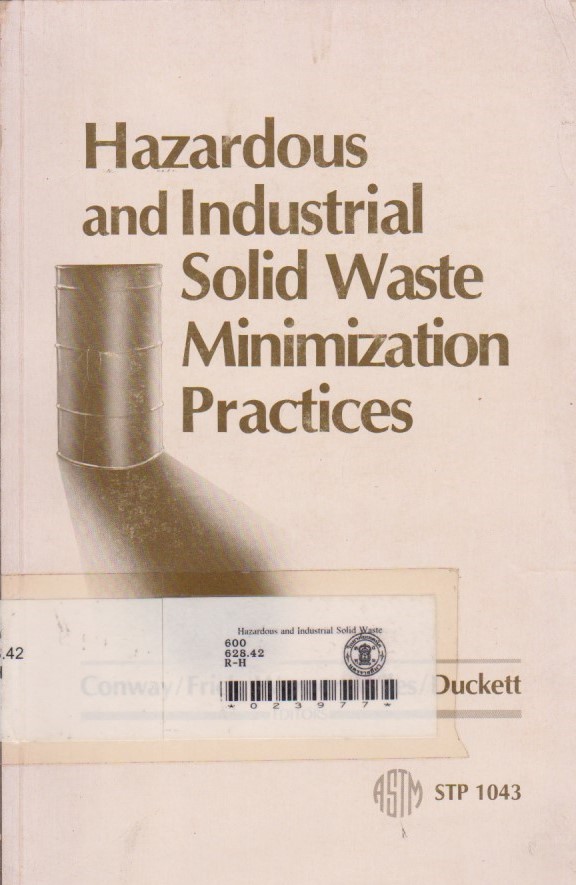ข้อมูลทรัพยากร

Hazardous and industrial solid uraste mininization practices
ประเภททรัพยากร : หนังสือเล่ม
ชั้นเก็บ : ตู้10 ชั้น 2 ฝั่งขวา
หมวด : 600
เลขหมู่หนังสือ : 628.42
สำนักพิมพ์ : ASTM
ผู้แต่ง : Conway
ยอดคงเหลือ : 1
เนื้อหาย่อ : The ASTM Symposium on Design and Protocol for Monitoring Indoor Air Quality was
pted by the growing concern for air quality in homes, offices, and schools and the need
ener design of investigations so that causes of indoor or air quality problems and their
ens are clearly understood. Numero rous chemical and physical factors influence the
r concentrations of contaminants. Source characteristics, chemical and physical sinks,
af air exchange. indoor airflow patterns, and occupant activities are so
aeed to be considered or measured when monitoring indoor air quality.
ome of the factors
r multiplicity of these factors makes the investigation design process complex. Deter-
the parameters to be measured as well as defining the extent of measurement are
aspects of designing a study. The process is further complicated by the fact that
buals drawn to such efforts are of diverse professional and educational backgrounds
mmental scientists, chemists, industrial hygienists, architects, mechanical engineers,
blic health professionals, to name a few. Thus a common understanding of the basis -
mducting indoor air quality measurements is required. Well-conceived designs and
anis form a crucial starting point for suc ccessful measurer ement programs.
dore summ narizing the symposi sium and the papers included in this volume, definitions
r words design and protocol are in o order. Design of a study or i or investigation relates to
ping a general strategy or approach. This involves a specific statement of goals for
eudy and translation of these goals into measurement objectives. The measurement
ees, at minimum, need to specify measurement parameters and statistically justifiable
he size.
mocol refers to specific procedures to be followed in conducting a study. To implement
sign, detailed procedures need to be developed to guide sample selection, monitoring,
assurance, and data analysis. The documentation of such procedural items forms a
e protocol for the study.
goals of the symposium were to provide information on designs and protocols used
erent types of indoor air quality monitoring studies and to provide learning oppor-
s through shared experience. Three types of sessions were organized to meet these
Case Studies-A limited number of studies were selected to provide an in-depth view
ps. protocols, and their relationships to study results. A 2-h session was devoted to
cse study. The studies were chosen through a peer-review process.
Technical PapersPapers representing state-of-the-art developments or offering val-
ihe practical experience in areas related to indoor air quality monitoring were presented.
e xicited and unsolicited papers rs were included.
I Workshops--Key areas related to design and protocol were selected for workshop
Presentations on relevant topics were included in each workshop, but the emphasis
e workshop sessions was on sharing knowledge through questions and answers.